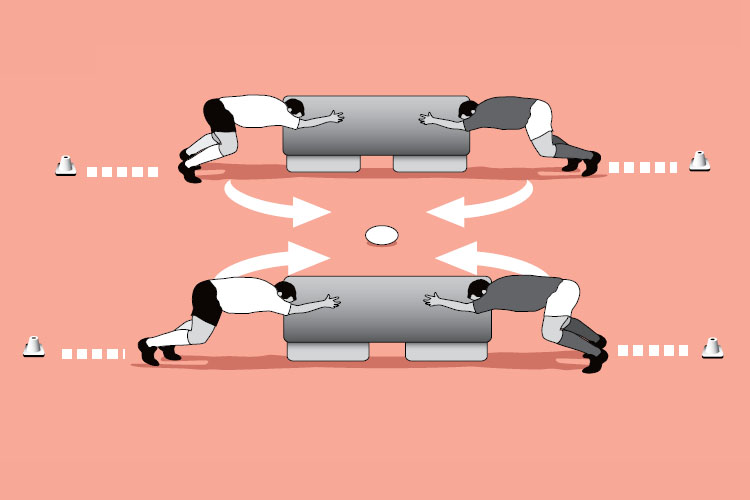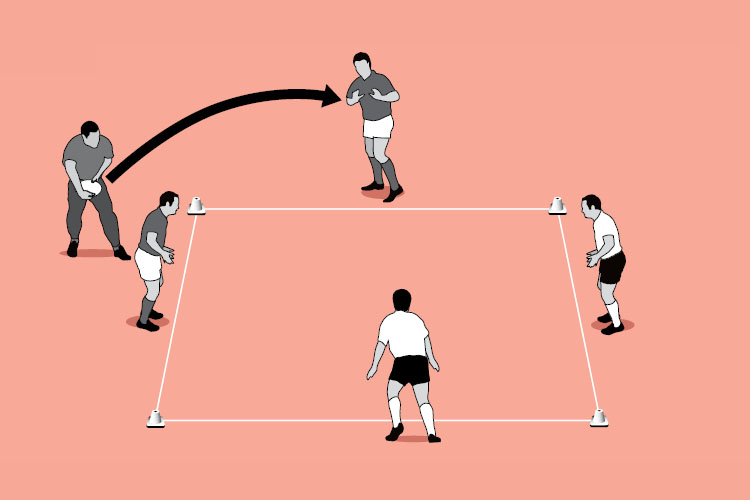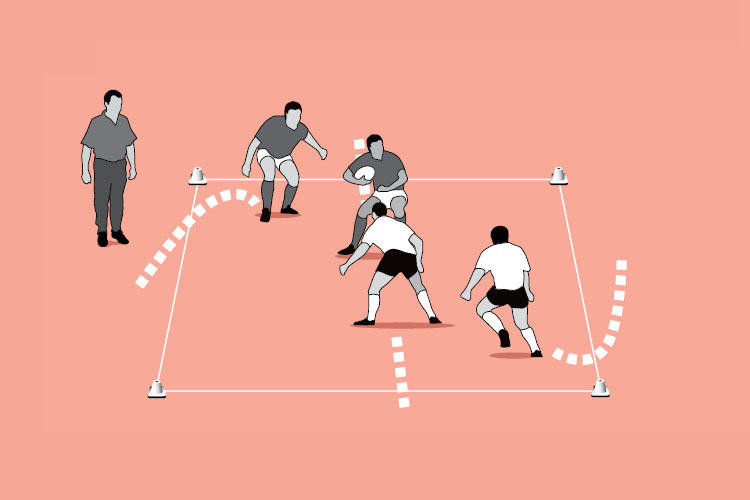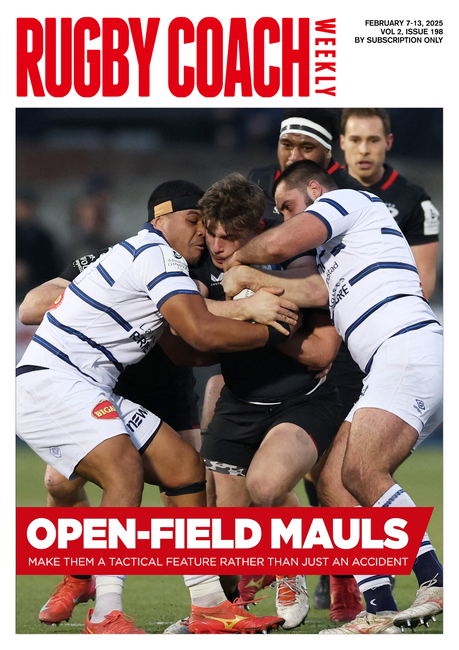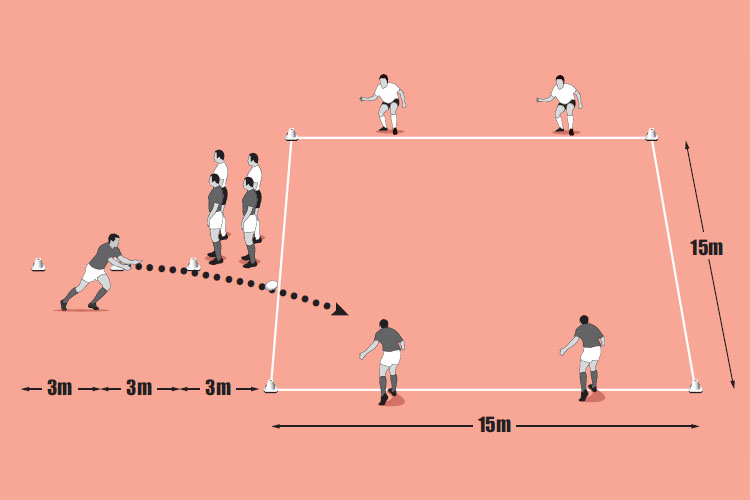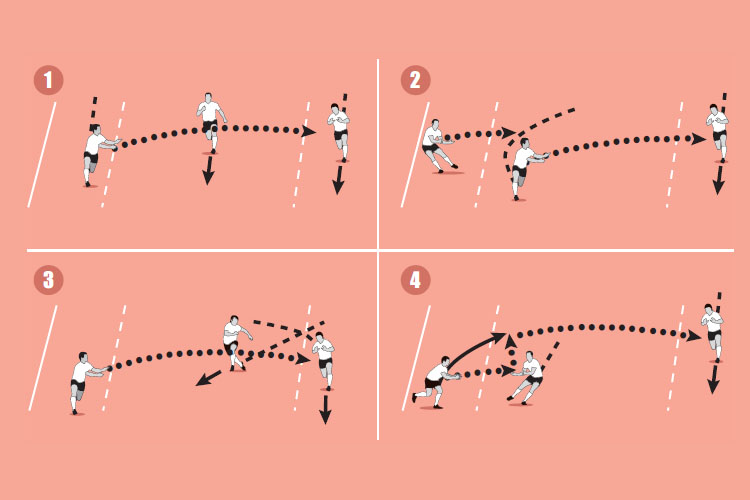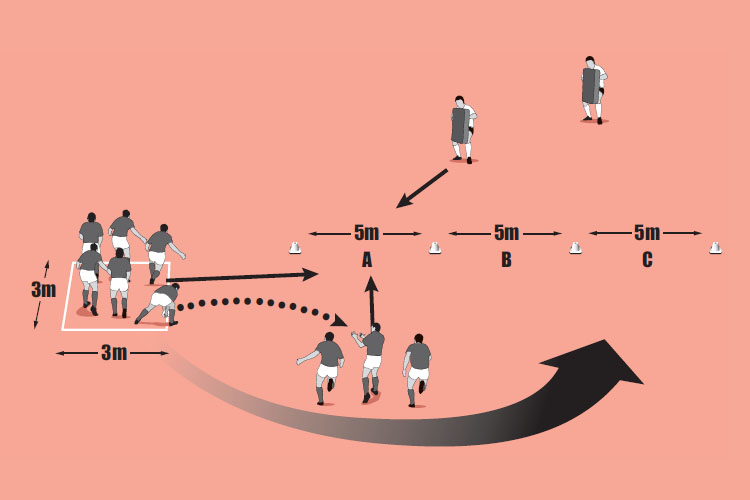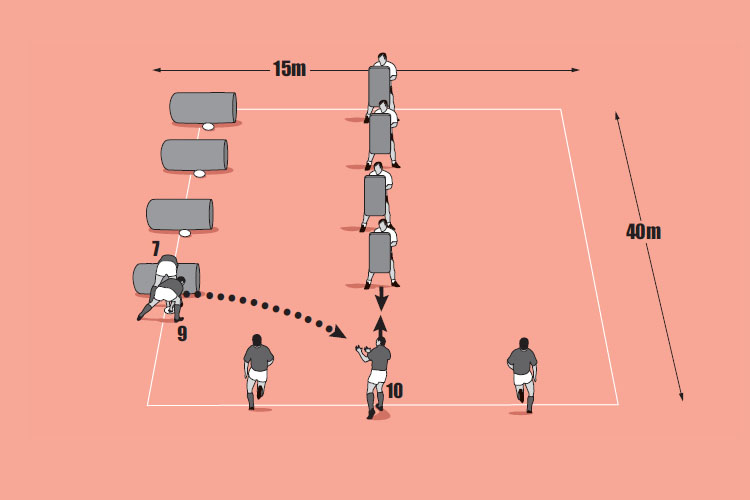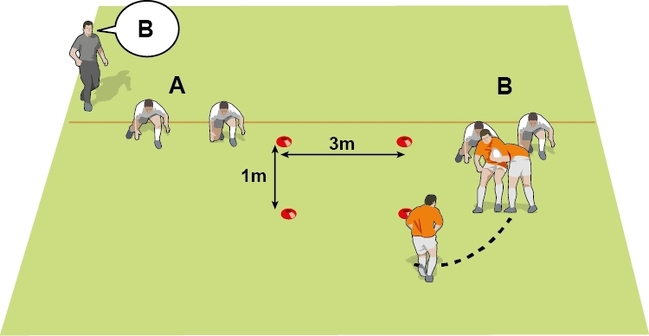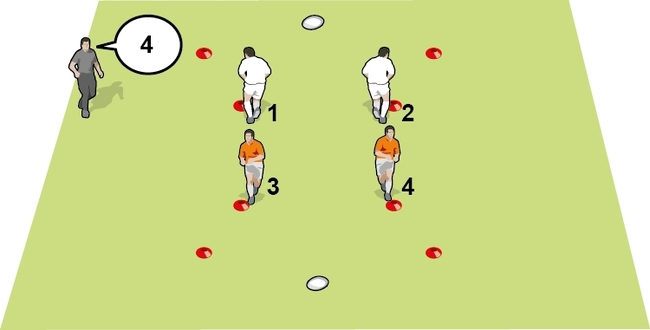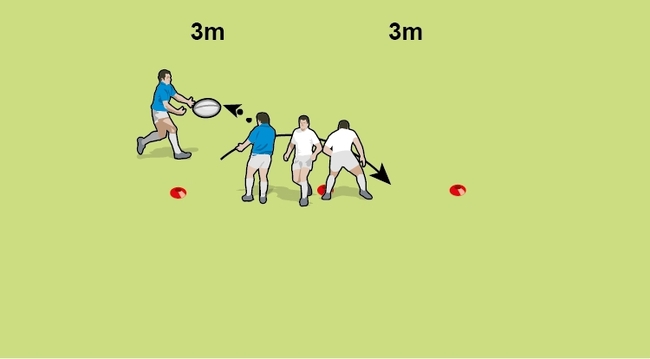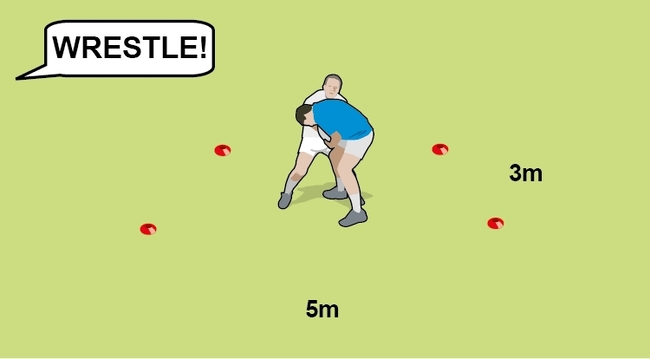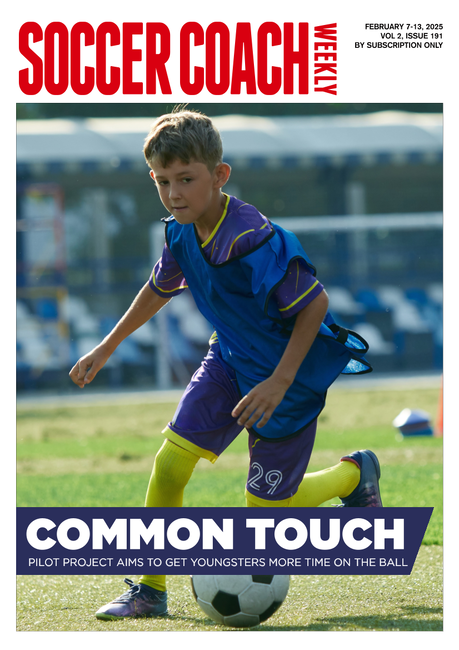Lower collisions
Your team can win more ruck ball if the players get lower, earlier in the collision contest. Then, once at the “correct” height, they must stay on their feet. The game situation in this session isolates the decision on the “correct” height and angle required to win the ball, and win it quickly.
Warm up time: 5-7
Session time: 8-10
Development time: 8-10
Game time: 10-15
Warm down time: 5-7
What to think about
The vertical targets in rucks are very small. Perhaps the would-be rucker can see a shoulder and a bit of the chest of the opponent he wants to clear away. There is little room for error if the player wants to make the biggest impact. We therefore have to be more inventive with the equipment we use to replicate a true ruck situation. We need to change the shapes and heights of the pads and tubes. In this session, the tackle tubes might well fall off the pads as they are driven. This is not a problem and may be more realistic, because if the players are not balanced and fall over with the tubes, then they will be out of the game for longer. You may want to increase the height of the tackle tubes, in which case stack two ruck pads on top of each other.set-up
- Get low early so you are driving up from a balanced position.
- Keep your hips and shoulders in line through the contact area to maximise your effort.
- Drive hard, but with balance, ready to react to different situations.
What you get your players to do
Set up two tackle tubes, each resting on two ruck pads, and with a ball between them (as in the top picture). Put a player two metres away from each end of the tubes. On your first signal, the players drive into the tubes, attempting to drive them over the ruck pad in front of them. On your second signal, the players break off and, in pairs, compete for the ball, perhaps with the added problem of the tubes lying in the way. The pair that has driven most effectively will be in the best position to win this contest.Development
Add three more players to each team. On your call of “ROTATE”, they rotate in front of the tubes. When you shout “HIT”, the players in front of the tubes drive into them, before competing for the ball as in the main session. At the same time, the other players run out to a cone 15m away and run back to join the contest for the ball.Related Files
Game situation
Split into pairs, placed around the box (as in the second picture). Throw the ball to one player who aims to score over the line opposite him. The other players join in. The game will be two 1 v 1 battles. First the tackler v the ball carrier, and then the two support players, contesting to win the ball if the tackle is successful. Award 1 point for the attack if they score, and 1 point for the defence if they legally prevent a try.What to call out
- “Head up through the contact”
- “Take short steps”
- “Communicate with your team mate on what you want them to do”
Newsletter Sign Up
Coaches Testimonials

Gerald Kearney, Downtown Las Vegas Soccer Club

Paul Butler, Florida, USA

Rick Shields, Springboro, USA

Tony Green, Pierrefonds Titans, Quebec, Canada
Subscribe Today
Be a more effective, more successful rugby coach
In a recent survey 89% of subscribers said Rugby Coach Weekly makes them more confident, 91% said Rugby Coach Weekly makes them a more effective coach and 93% said Rugby Coach Weekly makes them more inspired.
Get Weekly Inspiration
All the latest techniques and approaches
Rugby Coach Weekly offers proven and easy to use rugby drills, coaching sessions, practice plans, small-sided games, warm-ups, training tips and advice.
We've been at the cutting edge of rugby coaching since we launched in 2005, creating resources for the grassroots youth coach, following best practice from around the world and insights from the professional game.
